Southeast utilities are using the specter of blackouts last year to double down on the resource that failed customers the most: gas. Instead utilities should look to energy efficiency, solar and storage, increased regional coordination, and increased connections to other regions.
Maggie Shober | December 21, 2023 | UtilitiesLast December was certainly one to remember for a lot of reasons, particularly if you lived in parts of the Southeast that saw rolling blackouts for one or more days during freezing temperatures right before a major holiday. I am of course talking about Winter Storm Elliott that hit the Southeast on December 23-24, 2022, causing rolling blackouts throughout the region, especially in territories served by the Tennessee Valley Authority (TVA) and Duke Energy in the Carolinas. Utilities in the Southeast without a regional transmission operator, or an independent entity that operates the grid and ensures reliability across a large territory, were left on their own. These same utilities have increased reliance on fossil gas over recent years, leaving customers in the dark when those gas power plants failed.
We already had some helpful information from Duke about what happened to its systems in North and South Carolina, and some less-than-helpful information from TVA about what happened to its system. National entities FERC (the Federal Energy Regulatory Commission) and NERC (National Electric Reliability Corporation) recently published a joint report investigating what happened across all impacted areas and making recommendations to avoid rolling blackouts in the future. Here are some helpful tidbits from that report.
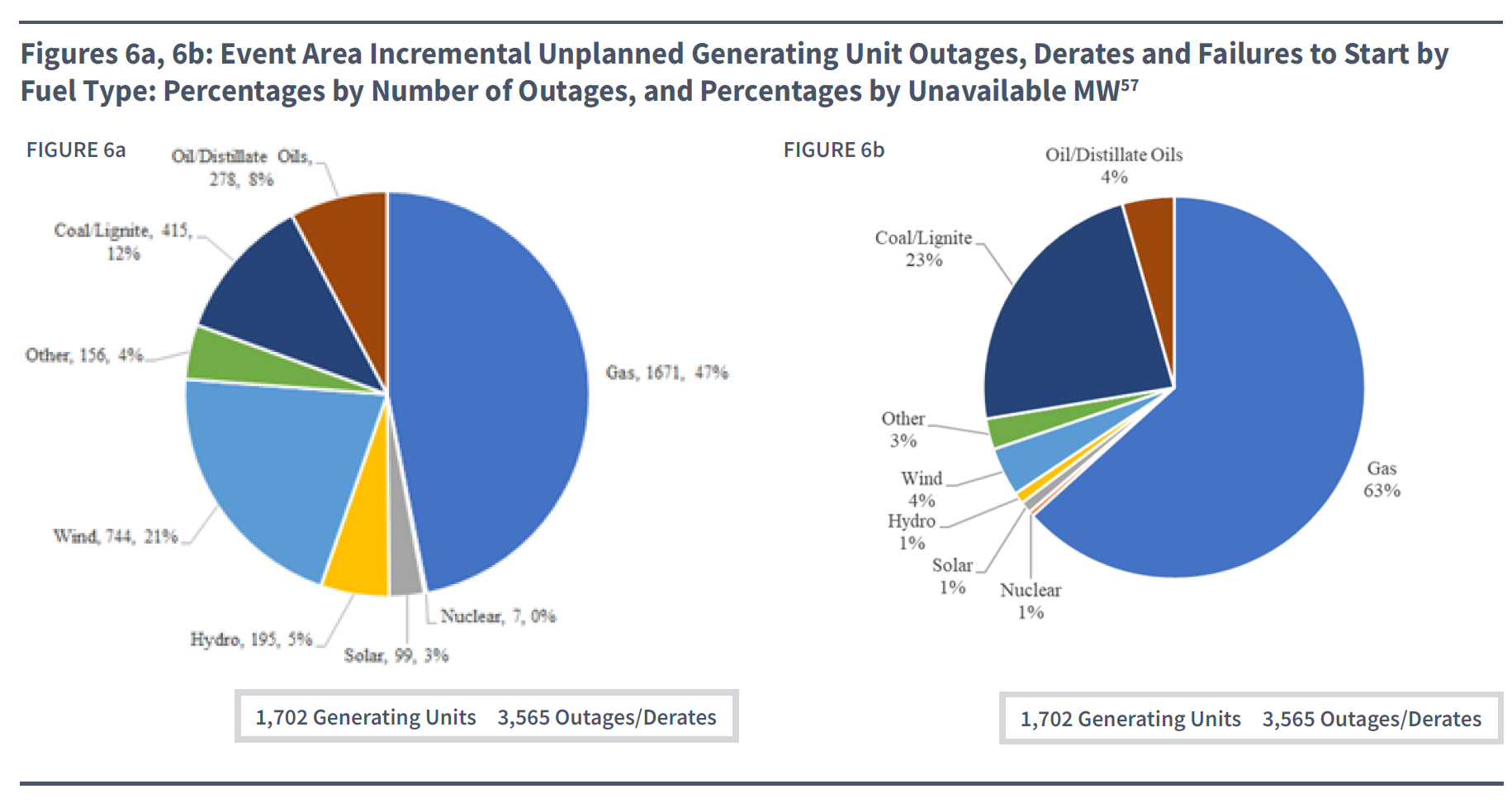
Throughout the storm, nearly 130 GW, or 130,000 MW, experienced outages. The peak level of outages was over 90 GW. These outages led to “load shed,” i.e. blackouts, second only to Texas in 2021. Most of the generation outages were gas, though TVA also lost an entire large coal power plant (its 2,200 MW Cumberland coal plant). There were three main reasons plants went offline or were derated: the plant experienced mechanical issues, freezing, or fuel issues.
From all of this one thing is clear: coal and gas power plants failed significantly more than expected and led to the need for rolling blackouts. Utilities actually plan their systems assuming that a certain amount of generation will be unavailable. The amount of generation that failed during Winter Storm Elliott far exceeded these planning assumptions.
Also apparent from the FERC/NERC report is that utilities should have been prepared. This is the fifth event in the last eleven years with the same causes and outcomes, making this an “unacceptably familiar pattern,” as described in the report. Also, this cold weather was forecasted “well in advance” of the storm; as early as December 14 according to the report.
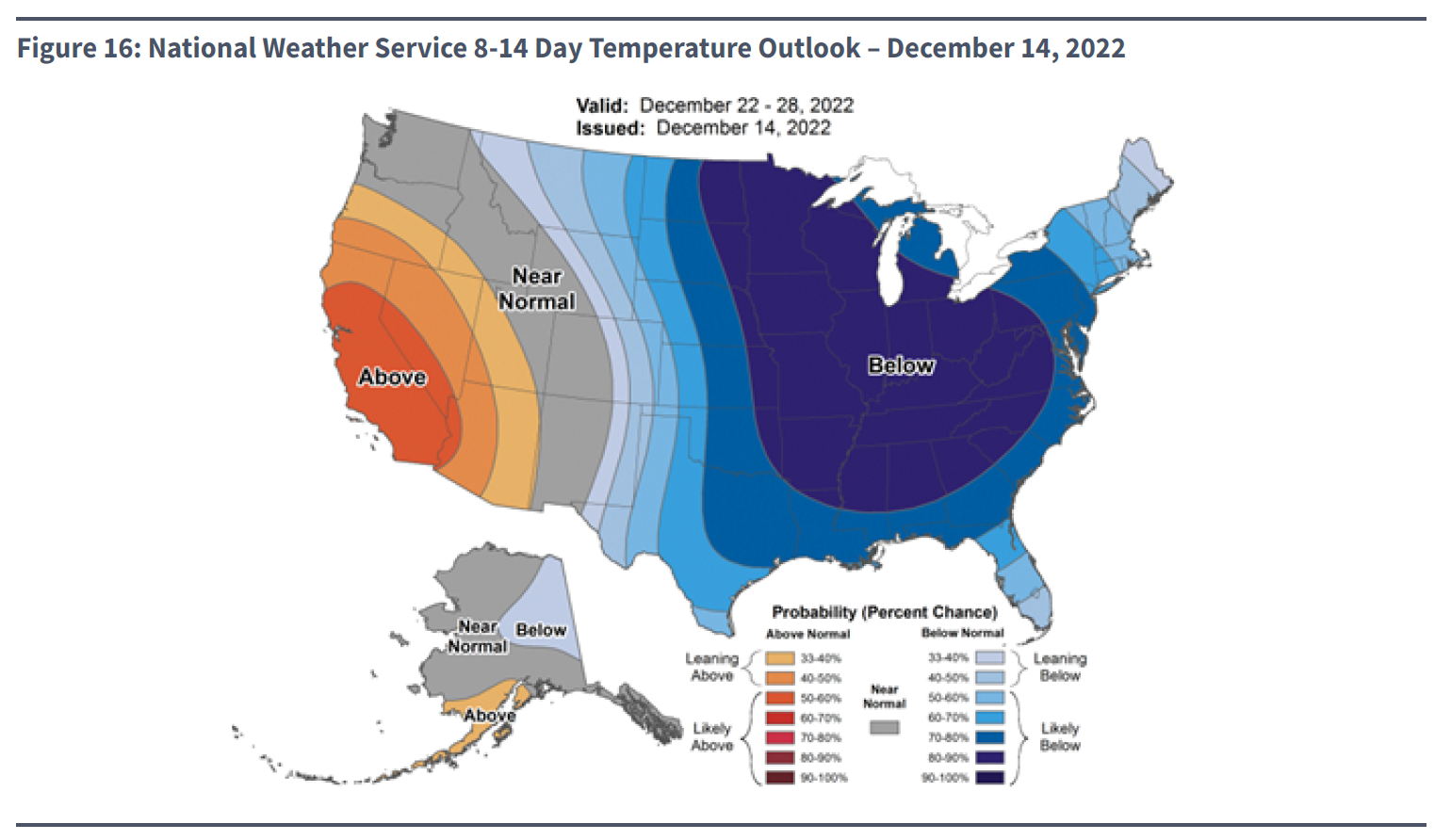
Winter Storm Elliott Timeline
December 14: Weather reports show extreme cold highly likely for December 22-25
December 19: TVA and Duke communicate risk of extreme weather internally
December 23: Rolling blackouts begin
- TVA began experiencing outages at 1:00am, with 6,000 MW out by 8:00am. TVA initially received emergency power from neighbors, including MISO, Duke, Southern Company, and PJM. Despite this assistance, with generation outages of 6,500 MW, TVA instituted rolling blackouts from 10:31am to 12:43pm.
- Duke began experiencing outages late (11:30pm), losing about 2,000 MW, and those outages continued into the next day.
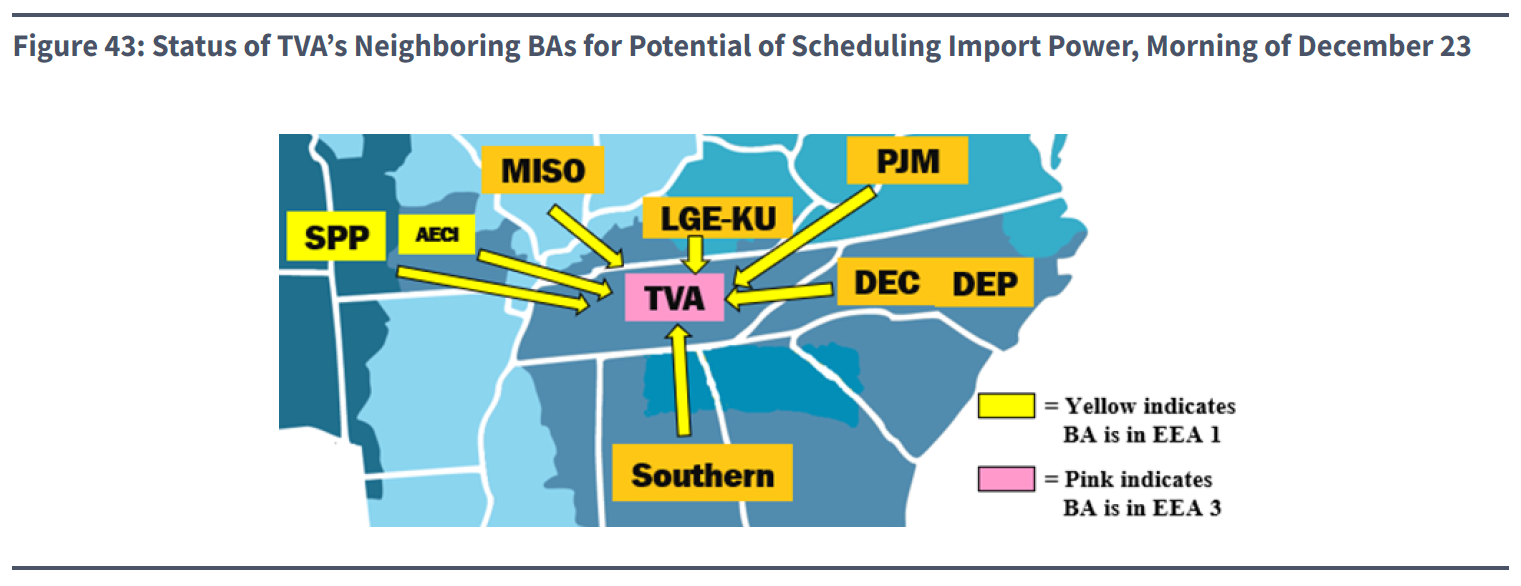
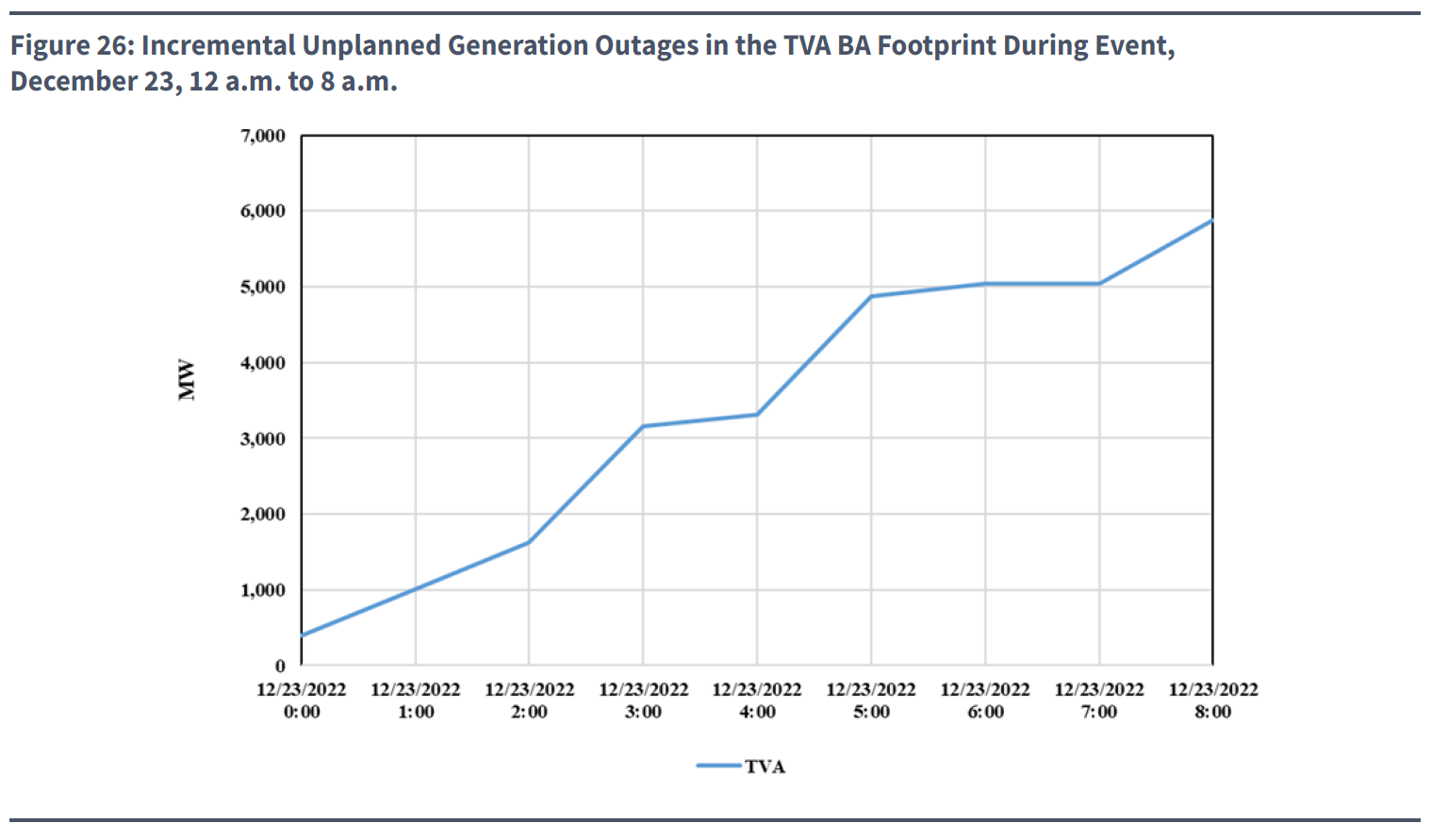
December 24: Rolling blackouts expand
- TVA was still experiencing generation outages and peak load from the previous day. Since the storm is so large, neighboring systems also had generation outages and peak load, so dialed back the emergency assistance provided to out-of-market utilities like TVA. TVA instituted rolling blackouts yet again, this time from 5:51am to 11:30am.
- Duke was already experiencing generation outages when assistance from neighbors was cut. Around 6:30am both Duke utilities began rolling blackouts. Duke stopped rolling blackouts by 8-10am, but because of some failures of the rolling blackout software, some customers remained offline until 3-4pm.
- DESC experienced over 1,000 MW of outages from 12:30am until shortly after 9:00am. DESC began rolling blackouts at 8:00am, then stopped them shortly thereafter after receiving emergency assistance from Southern Company, which was receiving emergency assistance from Florida Power & Light.
- Santee Cooper experienced over 500 MW of outages from 2:35am to 7:00am. Santee Cooper had approximately 30 minutes of rolling blackouts at 7:00am.
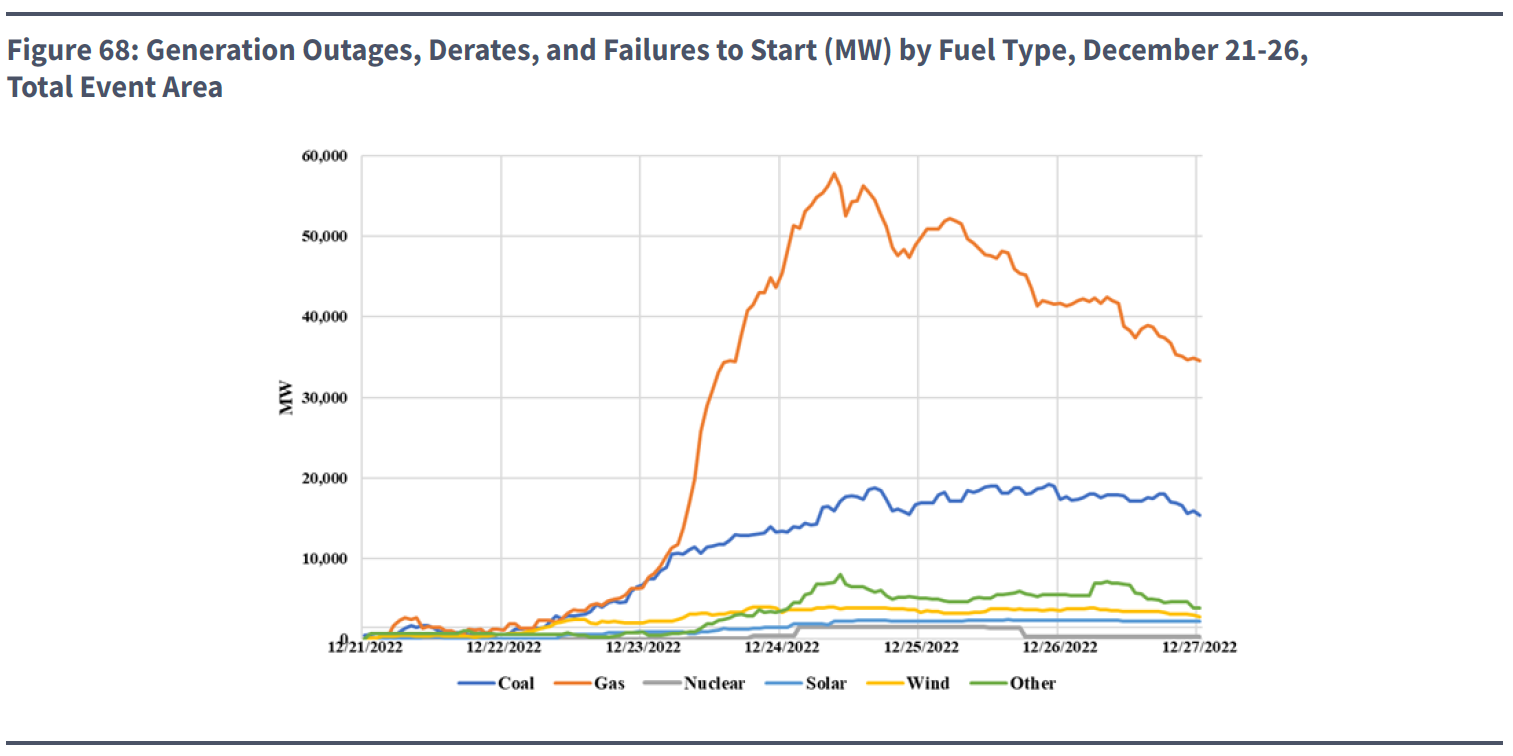
My Personal Reflections on Elliott
Just days before the winter storm hit our area in east Tennessee, we had our existing furnace serviced for the season. The importance of these kinds of services was made clear to use because the technician found that an issue with our furnace at that time was causing gas fumes to enter the house whenever the gas furnace ran. He turned off the gas part of the furnace so it would only run on the electric resistance backup until we could get a new unit installed.
So on December 23 and Christmas Eve, my family sat around in coats and hats inside while the power cycled on and off and the temperature ranged from 45-55 degrees inside our house. Regretting the impacts to the electric grid and our electric bill, we ran space heaters, and did what else we could. Our main focus for those two days was trying to keep the house warm enough for our small children. The holiday was barely an afterthought. Thankfully things warmed up to about 60 degrees on Christmas itself, and the kids opened presents wearing hats and gloves inside.
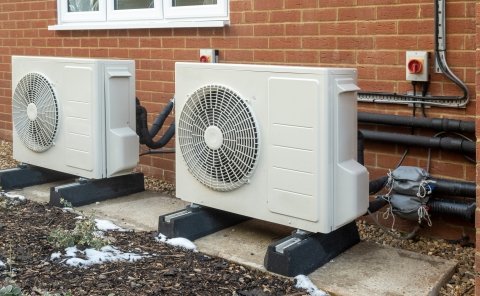
In early January 2023, we had a new heat pump installed, and our house has been toasty ever since. This new heat pump can effectively warm our house as long as the outside temperature is above negative four degrees, which it is here in Knoxville.
Moving Forward
The FERC and NERC staff have doubled down on their recommendations from previous winter storms, calling for electric utilities to winterize their systems, coordinate better with each other, and coordinate better with the gas industry. However, the response from the utilities themselves has been quite uniform and counter-intuitive; they want to double down on the resource that failed the most: gas. TVA and Duke’s systems in the Carolinas, the two systems with the worst blackouts, have proposed adding 4.5 and 6.2 GW of new gas power plants respectively.
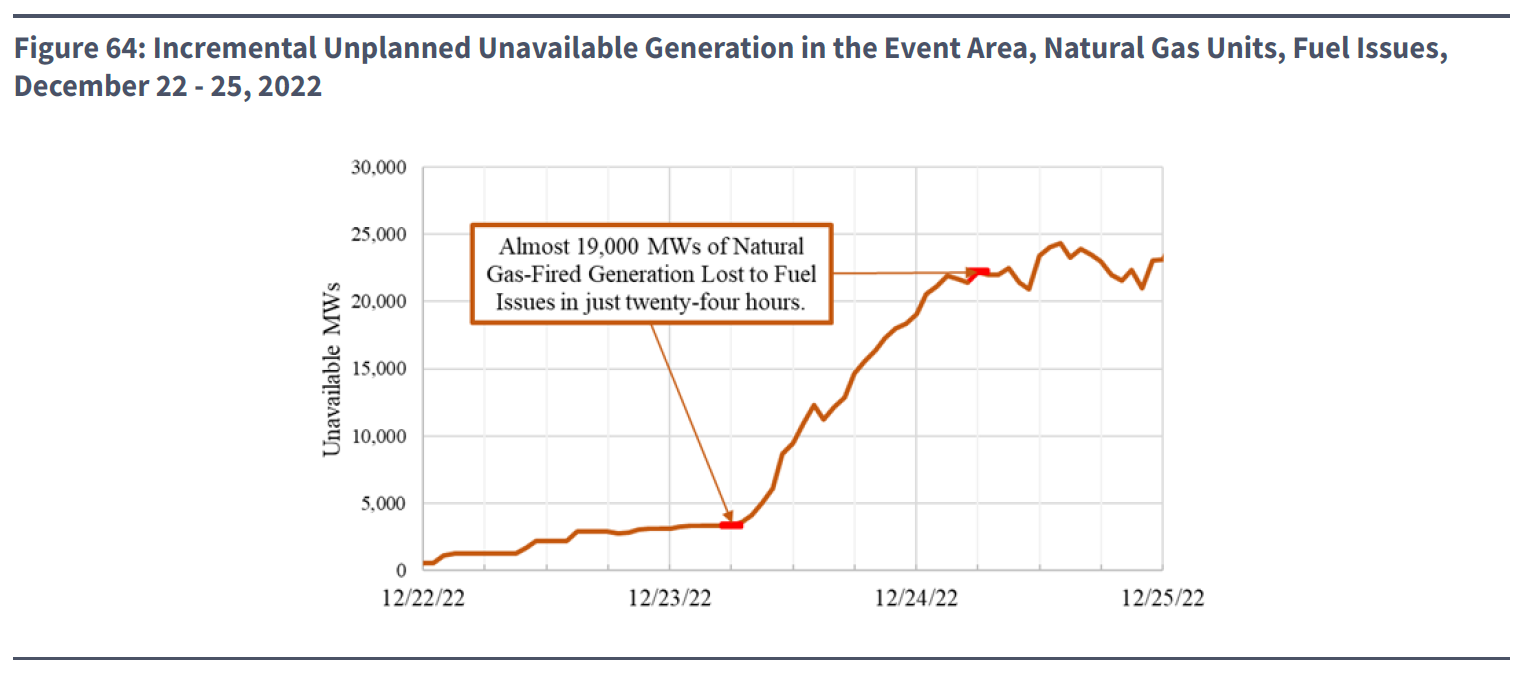
Instead, utilities should focus on clean energy resources that reduce or address high winter peak demand and provide resilience for customers in a world where extreme weather is becoming the norm.
- Utilities should share resources across larger regions and have grid resources managed by an independent entity, much the way markets are run to our north and west. These areas of the country experienced similar weather during Winter Storm Elliott, and while they also experienced generation outages, they did not have to resort to rolling blackouts.
- Utilities should incentivize customer energy efficiency and demand response programs that target winter peak demand. Cold weather heat pumps (like my new system), heat pump water heaters, and weatherization programs should all be ramped up across the region. And there are now expanded federal financial incentives for these systems; utilities could get more bang for their buck by crafting programs to target bringing as much of these federal funds to the region as possible.
- Utilities should invest in solar and storage resources. While generation outages began before the sun was up, rolling blackouts continued through midday. Solar resources can provide energy during these times (and did during Winter Storm Elliott), and if enough are added to the grid excess generation can be stored. Storage resources are flexible and responsive, and can be reliable resources when the grid is constrained.
- Utilities should increase transmission connections within the region and to other regions. While this storm covered an unusually large geographic area, most extreme weather does not. Our grid is more resilient if it is bigger than the weather. So the Southeast could provide solar power to the Midwest, and the Midwest could provide wind power to the South. In fact analysis shows there was excess wind in Oklahoma while TVA and Duke were rolling blackouts on their systems. Increased transmission connections between these regions could have avoided, or at least reduced the need for, the blackouts. A recent study by the Southeast regional transmission planning organization (SERTP) shows that it is surprisingly inexpensive to increase transmission within the region and to the Midwest.
As Christmas approaches with a newborn added to our family this fall, I am very grateful that we have a reliable heat system that will not pump toxic fumes into our house; and I hope TVA has learned its lesson from last year so we don’t have to weather another winter storm with rolling blackouts.